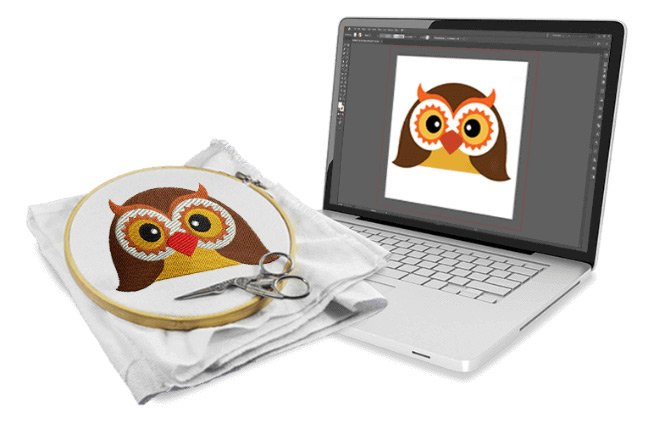The Business of DST Digitizing: How to Offer Professional Services
Imagine turning a complex logo or a beautiful piece of art into a set of precise instructions that an embroidery machine can understand. That’s the magic of DST digitizing. It’s the process of converting artwork into a digital file—most commonly the .DST format used by Tajima embroidery machines—that dictates every stitch, its direction, length, and sequence. For creative entrepreneurs and tech-savvy artists, offering professional DST digitizing services presents a fantastic opportunity to build a profitable business from anywhere in the world. This isn’t just about technical skill; it’s about blending artistry with technology to serve a growing market of brands, uniform companies, and everyday people looking to personalize their gear. If you’re curious about how to turn this niche expertise into a thriving venture, you’re in the right place. Let’s break down how you can offer professional, in-demand DST digitizing services. What Exactly Does a DST Digitizer Do? Before we dive into the business side, it’s crucial to understand the role. A DST digitizer is essentially a translator. They take client-provided artwork (usually in .JPG or .PNG format) and use specialized software to map out how an embroidery machine should recreate that design. This involves making a series of critical decisions: The final product is a compact .DST file that the client downloads and uploads to their embroidery machine to produce flawless embroidered products. Gearing Up: The Essential Tools of the Trade You can’t start a digitizing business without the right tools. Fortunately, the startup costs are relatively low compared to many other businesses. 1. Powerful Computer: You don’t need a supercomputer, but a reliable PC or Mac with a good processor and ample RAM is necessary to run digitizing software smoothly. 2. Digitizing Software: This is your most important tool. There’s a range of software available, from beginner-friendly options to industry-standard powerhouses. Many software companies offer free trials, so you can test a few to see which one fits your workflow best. 3. Embroidery Machine (Highly Recommended): While technically you can digitize without a machine, having one is a massive advantage. It allows you to stitch out your designs to check for errors, test how they look on different fabrics, and provide physical proof of your quality to clients. You don’t need an industrial machine; a reliable multi-needle home machine can be a perfect starting point. Setting Up Your DST Digitizing Business With the tools in hand, it’s time to build the framework of your business. 1. Define Your Niche: The embroidery world is vast. Instead of trying to be everything to everyone, consider specializing. You could focus on: 2. Price Your Services Competitively: Pricing is one of the trickiest parts of the business. Common models include: Research what other professional digitizers are charging to find a competitive yet profitable rate for your skill level. 3. Create a Professional Online Presence: Your website or online portfolio is your digital storefront. Finding and Keeping Clients A business is nothing without clients. Here’s how to find them. 1. Leverage Online Marketplaces: Platforms like Etsy, Fiverr, and Upwork are excellent places to start. They have a built-in audience looking for digitizing services. Create a compelling profile, use relevant keywords like “professional DST digitizing,” and offer exceptional service to get those first five-star reviews. 2. Network Locally: Don’t underestimate your local community. Visit print shops, uniform stores, and promotional product companies in your area. Introduce yourself, leave a business card, and offer a sample of your work. These businesses often outsource their digitizing and would prefer a reliable local contact. 3. Master SEO and Social Media: Use search engine optimization (SEO) on your website by creating content around keywords people search for, like “custom embroidery digitizing” or “DST file service.” On social media platforms like Instagram and Facebook, share videos of your designs being stitched out. This visual proof of your work is incredibly engaging and can attract a large following. 4. Provide Unmatched Customer Service: This is your biggest differentiator. Respond to inquiries quickly, be open to revisions (within reason), and deliver files on time. A happy client is a repeat client and your best source of referrals. The Key to Long-Term Success: Quality and Consistency The DST digitizing business is built on trust. Clients are sending you their valuable logos and branding, trusting you to make them look perfect in thread. Your reputation will hinge entirely on the consistency and quality of your work. Always stitch out a test design, especially for new clients or complex artwork. This allows you to catch any issues like puckering, loose stitches, or design errors before sending the file to the client. Delivering a flawless DST file every time will establish you as a professional and ensure your business thrives for years to come. Conclusion: Stitching Success One Pixel at a Time Building a business in DST digitizing is an exciting journey that perfectly marries technical precision with creative flair. It’s a service that is consistently in demand as embroidery continues to be a popular method for branding and personalization. By investing in the right tools, defining your niche, pricing your work fairly, and marketing your skills effectively, you can transform your expertise into a sustainable and rewarding professional service. Remember, every great embroidered patch, hat, or jacket starts with a meticulously crafted digital file. Now you have the blueprint to become the person who creates it.

